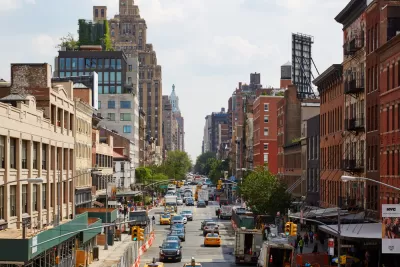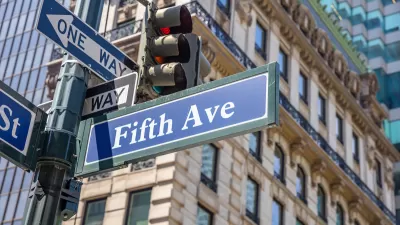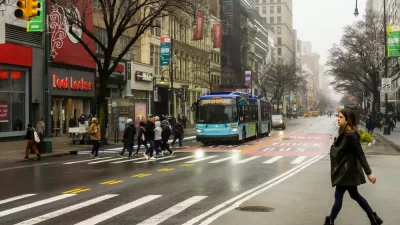A plan backed by New York City Mayor Eric Adams would repurpose 25 percent of the city’s street space for multimodal transportation and pedestrian plazas.

As reported by Micah Toll, a new plan from Transportation Alternatives known as NYC 25×25 would reclaim “the equivalent of 13 Central Parks worth of public space” from cars. “The proposal calls for 25% of NYC’s street space to be converted into walkable pedestrian plazas, bike lanes, green space, and bus lanes by 2025.”
According to the article, “With traffic-clogged streets moving at an average of 5 mph (8 km/h) in Midtown Manhattan, private automobile transportation in NYC is responsible for a significant portion of the city’s carbon emissions, air pollution, and urban grime.” And despite the fact that the majority of New Yorkers don’t own a car, “NYC currently has around 3 million free parking spots lining its streets, which is more than the number of cars registered in the city.” As Toll writes, “Repurposing street space would help to both clean the city and better serve its residents.”
The article notes that “Transportation Alternatives’ plan for NYC would see the creation of 500 miles (800 km) of dedicated bus lanes, another 500 miles of protected bike lanes, new secure garbage containers to prevent the piling of garbage mounds on sidewalks, and widespread community use of car-free roads.”
FULL STORY: NYC wants to take 25% of its street space away from cars in favor of a walkable/bikeable city

Trump Administration Could Effectively End Housing Voucher Program
Federal officials are eyeing major cuts to the Section 8 program that helps millions of low-income households pay rent.

Planetizen Federal Action Tracker
A weekly monitor of how Trump’s orders and actions are impacting planners and planning in America.

The 120 Year Old Tiny Home Villages That Sheltered San Francisco’s Earthquake Refugees
More than a century ago, San Francisco mobilized to house thousands of residents displaced by the 1906 earthquake. Could their strategy offer a model for the present?

Alabama School Forestry Initiative Brings Trees to Schoolyards
Trees can improve physical and mental health for students and commnity members.

NYC Outdoor Dining Could Get a Re-Do
The city council is considering making the al fresco dining program year-round to address cost concerns from small businesses.

HSR Reaches Key Settlement in Northern California City
The state’s high-speed rail authority reached an agreement with Millbrae, a key city on the train’s proposed route to San Francisco.
Urban Design for Planners 1: Software Tools
This six-course series explores essential urban design concepts using open source software and equips planners with the tools they need to participate fully in the urban design process.
Planning for Universal Design
Learn the tools for implementing Universal Design in planning regulations.
Ada County Highway District
Clanton & Associates, Inc.
Jessamine County Fiscal Court
Institute for Housing and Urban Development Studies (IHS)
City of Grandview
Harvard GSD Executive Education
Toledo-Lucas County Plan Commissions
Salt Lake City
NYU Wagner Graduate School of Public Service





























